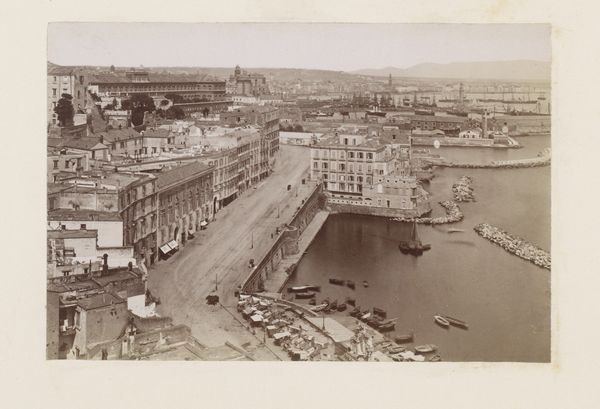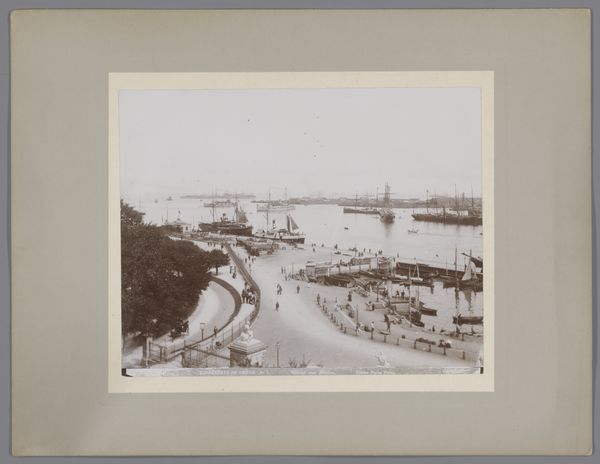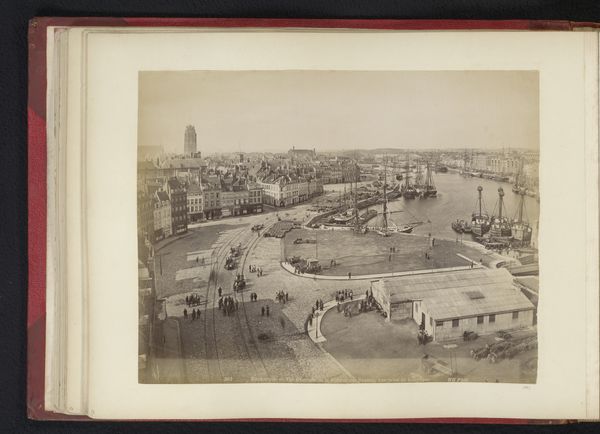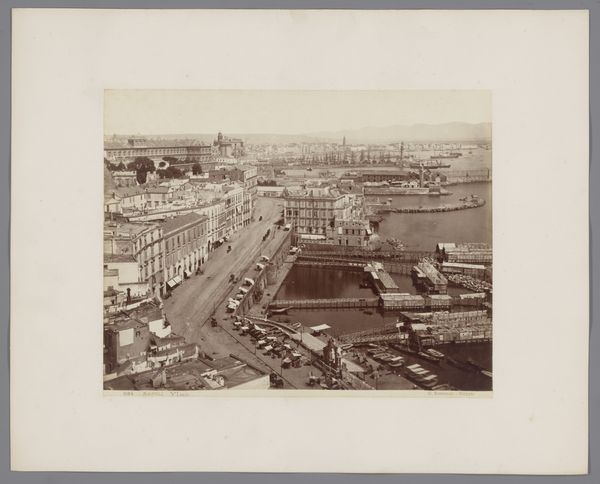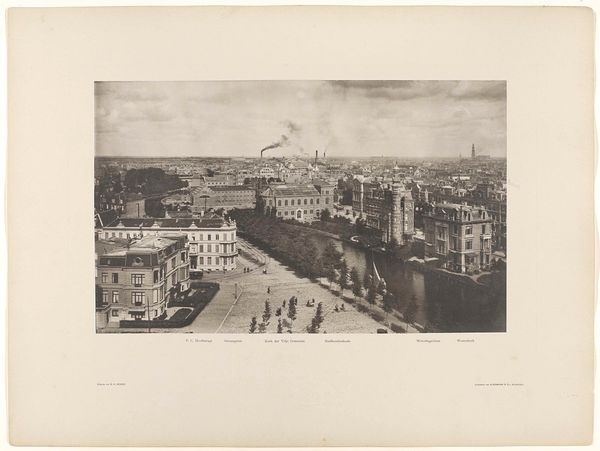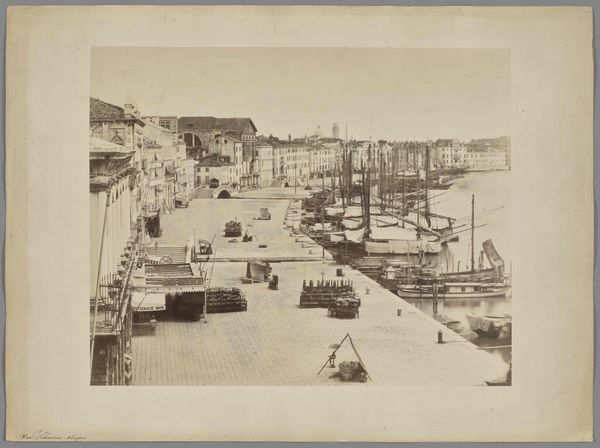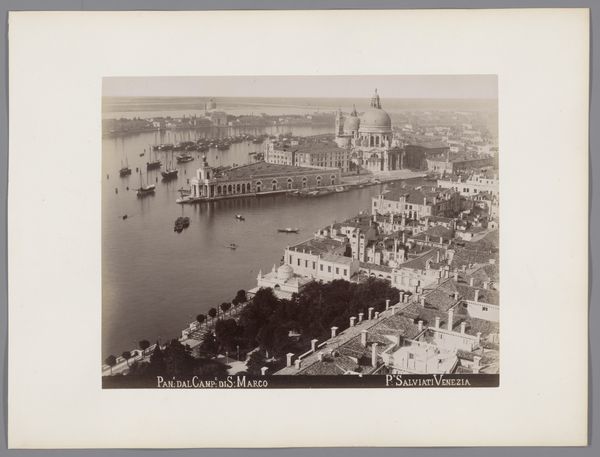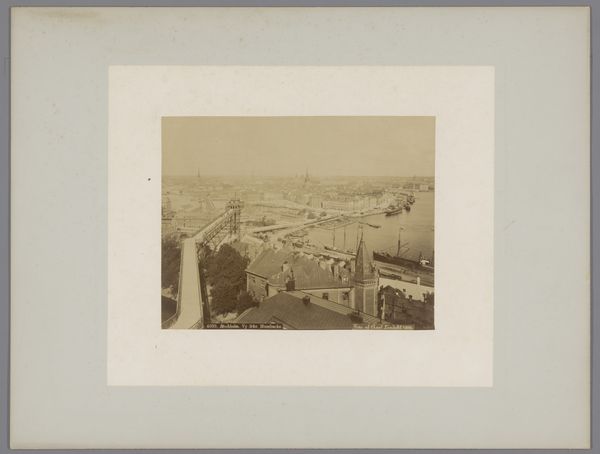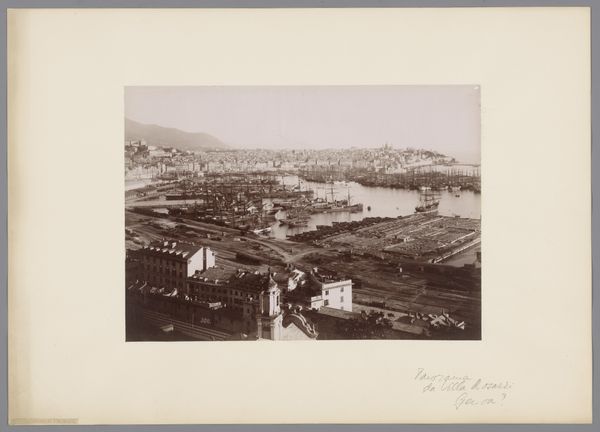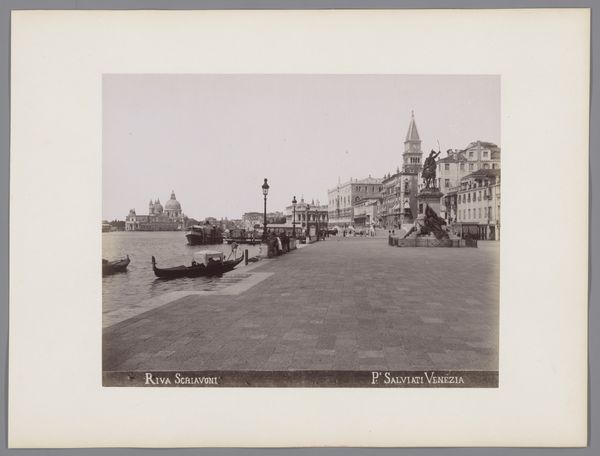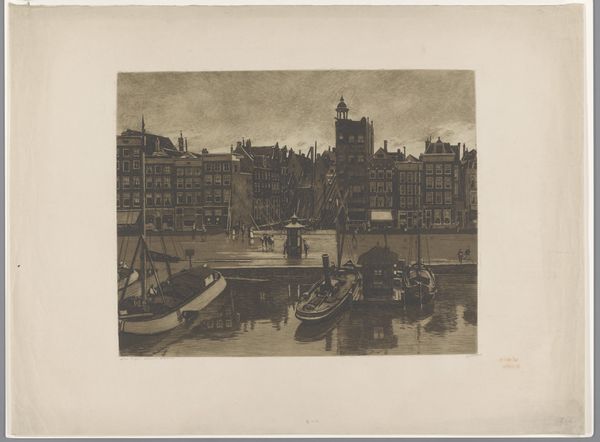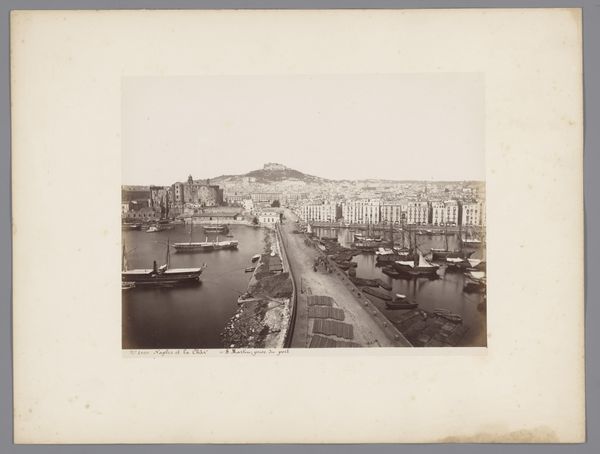
print, photography, gelatin-silver-print, albumen-print
# print
#
landscape
#
street-photography
#
photography
#
gelatin-silver-print
#
cityscape
#
albumen-print
Dimensions: height 162 mm, width 216 mm
Copyright: Rijks Museum: Open Domain
Curator: This captivating cityscape, created sometime between 1864 and 1900, is titled "Bøyabreen Glacier near Fjærland in Norway," and it’s the work of Knud Knudsen. It's a gelatin-silver print. What impressions strike you first? Editor: Immediately, I notice the sheer topographical layering. The photographic gray scale emphasizes the architectural forms moving from foreground to the harbor. The formal geometry feels carefully structured to frame the glacial vista. Curator: The monochromatic tone is certainly powerful, evoking a specific mood – one of restrained documentation. This image is, after all, capturing a period of Norway undergoing intense transformation. Industrial progress looms in the harbors below a landscape eternally impacted by the receding glacier, and the transition echoes through our history. Editor: Interesting. To me, the repetition of line—the waterfront's edge, the rows of ships' masts—works as a visual motif more than as social commentary. Knudsen seems drawn to the spatial organization itself; how one form nests into another creates depth and a type of optical balance. I do see now how this relates to themes of change, an old world gradually being overtaken. Curator: Exactly! Consider what the glacier meant to the Norwegian identity: a symbol of raw, untamed nature. To document its shrinkage alongside bustling infrastructure raises a point about Norway's shifting cultural memory – an awareness of loss as industrial modernity advances. It touches on complex feelings around progress. Editor: I concede. Placing emphasis on certain structures allows one to see an underlying message in his placement of elements. There are indeed several levels, so, it is more about a symbol being a city, an ocean, and, ultimately, a glacier than about mere design. A powerful articulation of place and transition through geometric and representational layering. Curator: So the composition itself, while visually striking, contains that weight, hinting at both physical and psychological changes embedded within the Norwegian consciousness of the era. Thank you. Editor: Thank you; the symbolic context truly transforms my understanding.
Comments
No comments
Be the first to comment and join the conversation on the ultimate creative platform.
